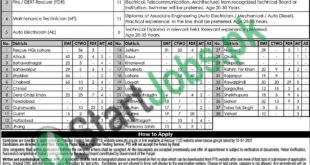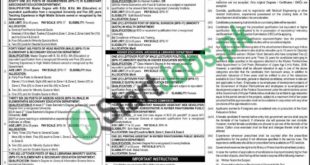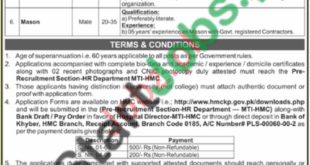Contents
How to Solve Analytical Reasoning Questions in NTS (Complete Solution Details):
We have collected some points to solve Analytical Reasoning Question for NTS Test and Quiz that will help you out to solve difficult question in your NTS Test Exam.
• The time period “analytic reasoning” refers to recognizing patterns and connections in a ramification of facts.
• Every analytical reasoning query is a logical puzzle, based on a given set of situations
• Analytical reasoning questions are provided in agencies of four or 5 questions. every group is based totally on a brief passage accompanied through a hard and fast of conditions.
• Analytical reasoning take a look at measures your capability to analyze and to draw result from a complex state of affairs by using making use of your good judgment.
• Analytical reasoning questions are designed to evaluate the ability to keep in mind a group of statistics and policies, and, given those information and policies, determine what should or should be proper. the specific eventualities related to these questions are generally unrelated to regulation, due to the fact they are supposed to be handy to a extensive range of take a look at takers. but, the skills examined parallel the ones concerned in determining what could or need to be the case given a hard and fast of regulations, the terms of a agreement, or the facts of a criminal case in terms of the regulation. in analytical reasoning questions, you are asked to reason deductively from a hard and fast of statements and rules or ideas that describe relationships among humans, things, or occasions.
• Analytical reasoning questions appear in units, with each set primarily based on a single passage. the passage used for every set of questions describes not unusual ordering relationships or grouping relationships, or a combination of both kinds of relationships. examples encompass scheduling personnel for work shifts, assigning teachers to magnificence sections, ordering tasks consistent with precedence, and distributing grants for initiatives.
• Analytical reasoning questions take a look at various deductive reasoning skills. these consist of:
• Comprehending the primary shape of a fixed of relationships by figuring out a whole method to die problem posed (as an example, an acceptable seating arrangement of all six diplomats around a table)
• Reasoning with conditional (“if-then”) statements and recognizing logically equivalent formulations of such statements
• Inferring what can be genuine or have to be genuine from given facts and rules
• Inferring what will be authentic or should be authentic from given facts and policies together with new statistics within the shape of an extra or replacement truth or rule
• Spotting whilst statements are logically equivalent in context by using identifying a condition or rule that would update one of the original conditions even as nevertheless resulting inside the equal viable consequences.
Analytical reasoning Types
• Seating Arrangements
• Sequencing
• Combinations
• Comparisons
• Selections
• Ranking
• Relations
• Grouping
Techniques used for Analytical problem solving
• Van Diagrams
• Math Operators
• Line up representation
• Equations
• Table representation
• Diagrams & Notations
• Basic Linear Sequence Game set up
• If then Notation:
• Grouping Game Diagrams
Math Symbols
any true diagramming system have to be:
• rapid – you need to be able to specific ideas in shorthand to save time
• neat – messy notations will fee you factors
• easy to recognize —you need to immediately recognize what your notations mean
1: Entities
• One of the first steps in putting in place your diagram is write down a letter or wide variety to symbolize each of your entities. every game could have a list of entities a good way to be placed into an order or organizations or each. start with the aid of writing down this listing of entities. for instance: you’re advised that there are five different clogs in a race and they may be a labrador, combined breed, newfoundland, poodle, and a schauzer. record this listing of entities as follows:
• L M N P S
• Note that we handiest used one letter for mixed breed. there is no feel in complicated your self with additional letters. keep it to 1 letter consistent with entity. additionally word that the entities are given in alphabetical order. however, they’ll regularly depart our a letter or to confuse you. some college students will unwittingly insert that letter by using force of addiction. for instance on this query many college students might just add within the letter o because the are used to o following l m n. make sure your list of entities fits the ones given.
• Now that we’ve our listing of entities we will pass directly to the diagram itself.
2: Basic Linear Sequence Game set up
• A linear collection recreation will ask you to place a set of entities in order. this will be expressed in some of approaches which include: 1st to 6th, first to closing, monday to friday, top to backside, front to lower back, and so forth.
• with a purpose to make an area for each entity for your diagram virtually lout an underline for every area in which an entity will cross. so if we are informed to list five puppies in order from quickest to slowest we can set up our recreation as follows:
• ____ _____ _____ _____ ______
• We now have five spots for our 5 dogs. in case you need you could put f and s at the ends of the diagram to symbolize that it goes from quickest to slowest. that is generally now not necessary and can waste time while you are re-drawing your diagram. in case you selected to encompass this more notation make sure that the f and s do no longer in shape any of your entities. for example if you had a schnauzer as one in all your canine sorts you’ll now not need to have s for schauzer and s for slowest. one manner you may keep away from this is to position the f and s for immediate and gradual in lower case.
3: Fixed Entity
• if we are instructed that an entity is located in one spot then we can simply fill that without delay into the diagram. this is the very best kind of rule to include. as an instance if we are informed that the schnauzer can be 3rd fastest then we can include it as follows:
• now not in that spot: if we’re informed that a particular entity does no longer cross in a selected spot we should add that directly to our diagram by putting the entity underneath that spot and designating that it does not go there. there are range of methods to designate that the entity does now not go there. you can placed a reduce thru it, or placed — in front of the entity. discover one that works quality for you. as an example if we are told the the poodle isn’t always the fastest canine we are able to consist of it in our diagram as follows:
4: Here or There Pair notation:
• this notation is used while entities are going to fill two spots however we don’t know which entity is wherein spot. as an example if k and t have to be in spots 2 and 3. we recognize we both have okay in 2 and t in three or t in 2 and okay in 3.
• the way to specific this with the here or there pair notation is as follows:
 5: If then Notation
5: If then Notation
• use an arrow ====> for if then statements. simply rewrite the if then announcement replacing if after which with ====> arrows. additionally keep in mind to shorten the entity to the primary letter.
• as an instance the announcement: if albert is covered then bert is likewise protected. may be expressed as:
• ====> a ====> b
6: Spots Between notation:
• if we are informed that entities are a particular variety of spots apart clearly insert that many clean traces among them. as an example: two runners come after sarah however earlier than fred. may be expressed as
s ____ _____ f
• this may be combined with the right here or there pair notation.
•example: two runners come between sarah and fred.
s/f ____ ____ f/s
Example: 1
• 7 persons live in a street, having houses in line. Consider the following:
1. A lives in the corner’s house.
2. 2. C is between E and G 3.
3. There is 1 house between D and F 4.
4. F is neighbor of G s.
5. There are two houses between A and G
Solution
7 Persons A,B,C,D,E,F,G
• 7 persons live in a street
We can make
X X X X X X X
1.A lives in the corner’s house
So, there are two possibilities:
A X X X X X X
X X X X X X A
2. C is between E and G
Here, also two possibilities:
E C G
G C E
3. There is 1 house between D and F Two possibilities:
D X F
F X D
4. F is neighbor of G
2 possibilities
F G or G F
There are two houses between A and G
A X X G
G X X A
Two houses between A and G: A X X G
C is between E and G: A E C G
F is neighbor of G: A E C G F
1 house between D and F : A E C G F X D
And finally: A E C G F B D
Example: 2
• As part of their sports physical, seven college athletes F, G, H, I,J, K and L are being weighed. In announcing the results of the physical exams, the coach has given the following information.
i. None of the athletes is exactly the same weight as another athlete.
ii: K is heavier than L, but lighter than H.
iii. I is heavier than J
iv. Both F and G are heavier than H.
Solution
• We Can Make Such relations from Given Information
1: Seven College athletes are F G H I J K L
i. None of the athletes is exactly the same weight as another athlete. So we can represent as F > G > H > I > J > K > L
ii: K is heavier than L, but lighter than H.
H > K > L
iii: I is heavier than J : I > J
iv. Both F and G are heavier than H. F > G > H OR G > F > H
• So the overall relation for Given athlete becomes
H > K > L
F > G > H > k > L OR G > F > H > k > L
Where I > J can be adjusted anywhere in Above relations Any Single Athlete or more can be possible between I & J Such as I > F > J, I > J > G, I > H > K > J
• Question. 1: Each of the following could be true EXCEPT
A. F is the heaviest.
B. G is the heaviest.
C. I is the heaviest.
D. More than three athletes are heavier than K.
E. More than three athletes are lighter than K.
• Answer is E
• As Maximum three athletes can be lighter than K
• F > G > H > k > L > I > J OR G > F > H > k > L > I > J
• Question.2: Which of the following, if true, would be sufficient to determine which athlete is the lightest?
A. I is the heaviest
B. I is lighter than K
C. K is heavier than J
D. J is heavier than K
E. Exactly five students are lighter than F.
• Answer is D
• If J is heavier than K then simply L will be the Lightest
• F > G > H > k > L OR G > F > H > k > L and I > J before K.
• Question. 3: If J is heavier than F, how many different rankings by weight, of the athletes are possible?
A. 1
B. 2
C. 3
D. 4
E. 5
• Answer is D
• As F > G > H > k > L OR G > F > H > k > L & I > J > F
• If J > F then following relations can be possible
• I > J > F > G > H > k > L
• I > J > G > F > H > k > L
• I > G > J > F > H > K > L
• G > I > J > F > H > K > L
• Question. 4: If H is heavier than I, which of the following CANNOT be true?
A. I’s weight is equal to the average of F’s weight and G’s weight.
B. I’s weight is equal to the average of K’s weight and L’s weight
C. J’s weight is equal to the average of K’s weight and L’s weight
D. J is the second lightest.
Answer is A
As H > I so possible relations can be
F > G > H > k > I > L > J OR G > F > H > I > k > J > L
Hope these all information will help you out in the NTS Test examination. You can check more NTS Jobs 2017 from here. Source [NTSForum]
 Startjobs.pk – Start Your Career In Pakistan As Per Qualification
Startjobs.pk – Start Your Career In Pakistan As Per Qualification








Hello. And Bye.